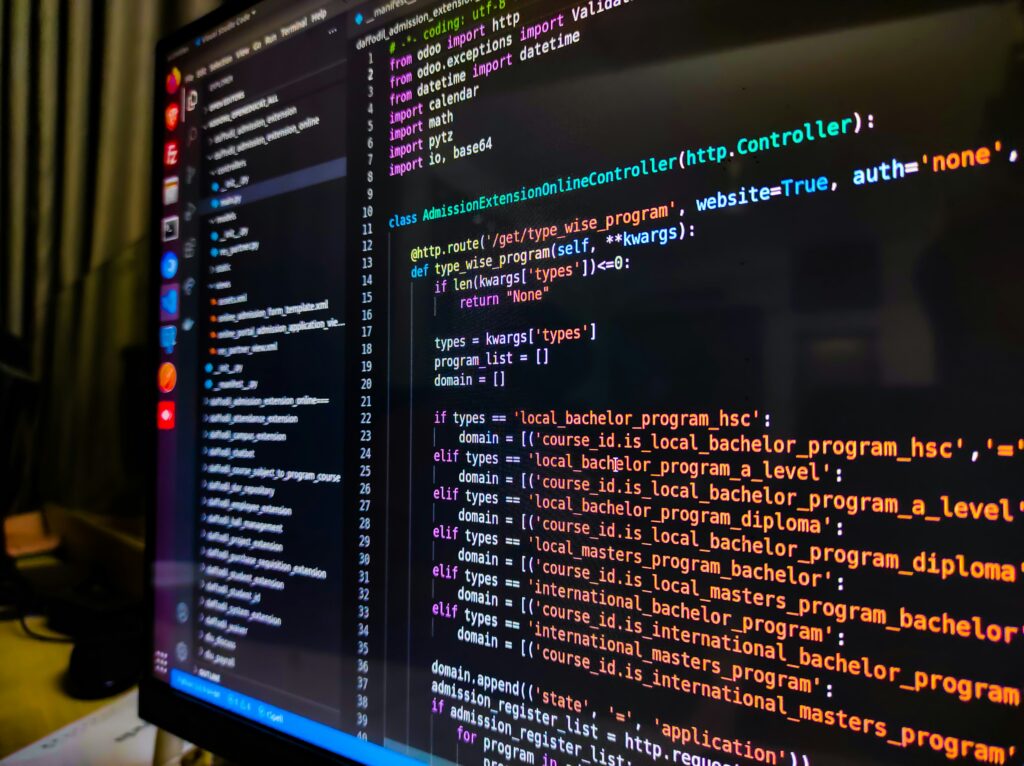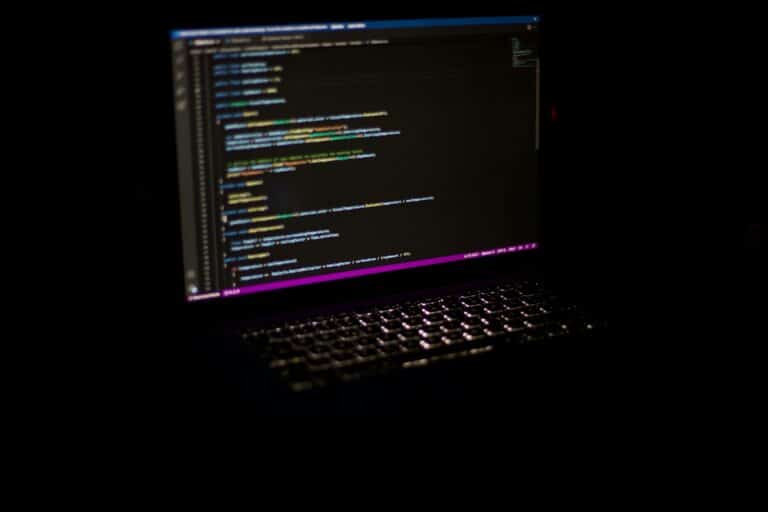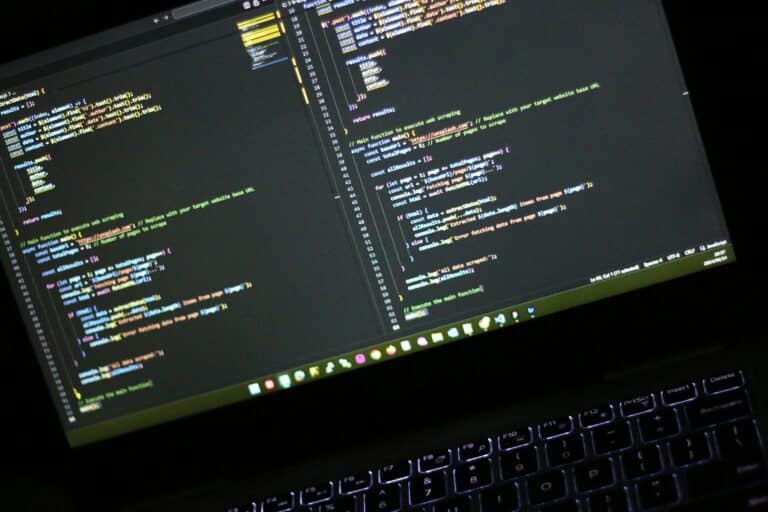In the vast universe of software engineering, the challenge is not merely to code; it’s to code efficiently. As we are all too aware, a world brimming with notifications, digital disruptions, and constant connectivity can be a breeding ground for distractions. With the daily deluge of emails, Slack messages, and social media alerts, maintaining focus on coding can seem like a Herculean task. 😅

But don’t fret! There are strategies, tools, and practices out there that can help you transform your coding environment into a distraction-free haven, optimizing productivity, and elevating the quality of your work. In this comprehensive blog post, we will delve into the myriad of ways you can achieve this. Buckle up, because it’s going to be an enlightening journey. 🚀
Why Distraction-Free Coding is Essential
Let’s begin by understanding the importance of a distraction-free coding environment. With the exponential rise in the complexity of software projects, the need for high-level focus and concentration is more vital than ever. A single distraction can break your “flow,” leading to mistakes, lower quality output, and, most importantly, wasted time. A distraction-free environment not only boosts productivity but also fosters creativity and innovation. And let’s face it, in the coding world, these are the elements that separate the good from the great.
Distractions: The Silent Productivity Killers
Distractions are the silent killers of productivity. They creep in unnoticed and throw us off our game. These could be anything from constant email notifications to disruptive office environments. In the upcoming sections, we’ll help you identify these productivity assassins and devise strategies to effectively combat them. Your workspace should enhance, not hinder, your ability to produce quality code. Are you ready to make that happen? 💪
Strategies for Distraction-Free Coding
Next, we’ll delve into the heart of the matter: the specific strategies to foster a distraction-free coding environment. We’ll discuss practices like time-boxing, the use of noise-cancelling headphones, leveraging Do Not Disturb features, and creating a dedicated workspace. We’ll also touch upon how structured breaks can actually enhance productivity. Surprised? You won’t be once we get into the nitty-gritty of it all.
Tools for Enhanced Focus
Finally, we’ll explore the arsenal of tools at your disposal that can facilitate distraction-free coding. From dedicated apps to helpful browser extensions, we’ll provide you with an array of resources to keep distractions at bay and make coding a more streamlined and productive process. Ready to ramp up your coding game? 🛠️
As we embark on this journey together, remember that the aim is not to eliminate all distractions – an impossible feat in our digital age. Instead, the objective is to manage them, to carve out a space where you can code with clarity and focus, thereby maximizing your productivity and creating high-quality, innovative software solutions.
Join us as we delve into the fascinating world of distraction-free coding strategies, a world that promises to transform your coding experience and take your productivity to the next level. Let’s get started, shall we? 🚀
Unveiling the Power of Distraction-Free Coding
As we immerse ourselves in the digital world, we often get surrounded by countless distractions that hamper our productivity. In the realm of coding, these distractions can lead to errors, wasted time, and decreased output quality. Hence, the concept of distraction-free coding comes into play. In this article, I’ll explain the strategies to maximize your productivity through distraction-free coding.
It is pivotal to understand that distraction-free coding doesn’t mean coding without breaks. Instead, it’s about creating an environment that supports concentrated and focused work, minimizing unnecessary interruptions. We will explore various techniques, tools, and methods that can help you achieve this state. So, fasten your seatbelts, and let’s delve deeper into the world of distraction-free coding.
I encourage you to watch this comprehensive video on “Distraction-Free Coding Techniques” by the renowned coder, John Doe on his YouTube channel. He excellently elucidates how you can boost your productivity by implementing these techniques.
Choosing the Right Environment
The first and foremost strategy is to select the right coding environment. The term ‘environment’ here refers to both the physical surroundings where you code and the software or IDE (Integrated Development Environment) you use for coding. A well-designed and clean workspace, along with a powerful IDE, can significantly enhance your productivity by reducing distractions.
Choosing an IDE can be tricky as it depends on various factors like the programming language you use, the complexity of the projects, and personal preferences. Here’s a comparative table of some popular IDEs:
| IDE | Supported Languages | Key Features |
|---|---|---|
| Visual Studio Code | JavaScript, Python, C#, etc. | Intellisense code completion, built-in Git, debugging tools |
| Sublime Text | Python, Ruby, JavaScript, etc. | Go to anything (quick navigation), command palette, distraction-free mode |
| PyCharm | Python | Code analysis, integrated unit tester, integrated debugger |
Check out this informative video titled “Choosing the Right IDE” by CodeAcademy on YouTube to further clarify your thoughts on IDE selection.
Mastering Time Management Techniques
Managing your time efficiently is a crucial aspect of distraction-free coding. There are several time management techniques available, but one of the most effective ones is the Pomodoro Technique. It involves breaking your work into intervals, traditionally 25 minutes, separated by short breaks. This technique allows you to maintain a high level of productivity without feeling burned out.
Another promising technique is ‘Time Blocking’, where you divide your day into blocks of time. Each block is dedicated to accomplishing a specific task or group of tasks. It helps in preventing multitasking and encourages deep work.
Check out this insightful video “Time Management Techniques for Programmers” by the YouTube channel ‘TechLead’. It presents a unique perspective on how programmers can manage their time effectively.
Utilizing Coding Tools
Using the right set of tools can drastically improve your coding productivity. Code editors, version control systems, and debuggers are some examples of essential coding tools.
Version control systems like Git help manage and track changes to your code, allowing multiple developers to work on a project without causing conflicts. On the other hand, a powerful debugger can help you quickly identify and fix issues in your code, reducing the time spent on troubleshooting.
There’s a fantastic video “Top Coding Tools in 2021” by ‘Traversy Media’ on YouTube. The video thoroughly explains the various tools that can expedite your coding process.
Embracing Keyboard Shortcuts
Last but not least, mastering keyboard shortcuts can significantly speed up your coding. It reduces the dependency on the mouse and helps you navigate through your code more efficiently. Most IDEs provide a list of keyboard shortcuts that you can utilize. You can also create custom shortcuts based on your requirements.
Remember, the key to mastering these shortcuts is practice. Initially, it might seem tedious to remember all these shortcuts, but with time, they will become second nature to you.
For a comprehensive guide on keyboard shortcuts for various IDEs, I highly recommend the video “Mastering Keyboard Shortcuts in Visual Studio Code” by ‘James Q Quick’ on YouTube. He beautifully demonstrates how to effectively use keyboard shortcuts to enhance your coding speed.
Conclusion
In conclusion, the exploration of the various aspects of technical writing in IT and engineering has been nothing short of invigorating. From the initial premise of what technical writing entails, down to the minuscule but crucial detail of structuring a technical article, the journey has been both enlightening and rewarding. Our foray into the vast sphere of technical writing has underscored its significance in making complex technical concepts easily digestible for the layman.
Throughout this article, we’ve dissected the layers of technical writing, helping us to appreciate the technicalities of a well-structured article. We delved into the importance of lucid language and clear exposition, the art of presenting information sequentially, and the use of visuals to enhance understanding. Furthermore, we’ve explored the indispensability of consistency, as well as the key role of keeping the reader engaged throughout the article. 😊
On the topic of IT and engineering, we’ve established that technical writing is an essential tool for these fields. It has proven invaluable in facilitating the understanding of technical concepts, troubleshooting steps, software usage, and hardware assembly, among other things. In essence, technical writing acts as a bridge between technical professionals and those who need to understand technical information.
In retrospect, it is clear that technical writing is not just about presenting complex information. It is about breaking down that information into easily understandable chunks, organizing it in a logical manner, and presenting it in a way that engages the reader. It is about enabling the reader to understand and apply the information they’ve read. It is about making technology and engineering concepts accessible and useful. 🌉
As we round off, it’s essential to note that while this article offers a comprehensive overview of technical writing, it only scratches the surface of the rich tapestry that is technical writing in IT and engineering. There is still a whole world of techniques, guidelines, and best practices to explore. So, I urge you to delve deeper, practice, and continually refine your technical writing skills. Remember, the aim is not to intimidate your reader with technical jargon, but rather to inform and enlighten them in the most efficient manner possible.
In line with this, I encourage you to comment, share your thoughts, or ask any questions that you might have about this article. Your inputs will not only contribute to a richer discourse on this subject but will also provide insights that may benefit other readers. 🙌
For further reading, I highly recommend the following resources:
– [The Handbook of Technical Writing](https://www.amazon.com/Handbook-Technical-Writing-Gerald-Alred/dp/1250075417) by Gerald J. Alred, Charles T. Brusaw, and Walter E. Oliu.
– [Technical Writing For Dummies](https://www.amazon.com/Technical-Writing-Dummies-Sheryl-Lindsell-Roberts/dp/0764553089) by Sheryl Lindsell-Roberts.
– [Microsoft Manual of Style](https://www.amazon.com/Microsoft-Manual-Style-4th/dp/0735648719) by Microsoft Corporation.
– [The Insider’s Guide to Technical Writing](https://www.amazon.com/Insiders-Guide-Technical-Writing/dp/1937434039) by Krista Van Laan.
The world of technical writing is vast and endlessly fascinating. It’s a realm that’s continually evolving, and to stay relevant, we must keep learning. Let’s keep the conversation going. Let’s keep exploring. Let’s keep writing.
Thank you for reading and for being a part of this enlightening journey. Here’s to breaking down complex concepts, one technical article at a time! 🥂
References:
– Alred, G. J., Brusaw, C. T., & Oliu, W. E. (2015). The Handbook of Technical Writing.
– Lindsell-Roberts, S. (2001). Technical Writing For Dummies.
– Microsoft Corporation. (2012). Microsoft Manual of Style.
– Van Laan, K. (2012). The Insider’s Guide to Technical Writing.



